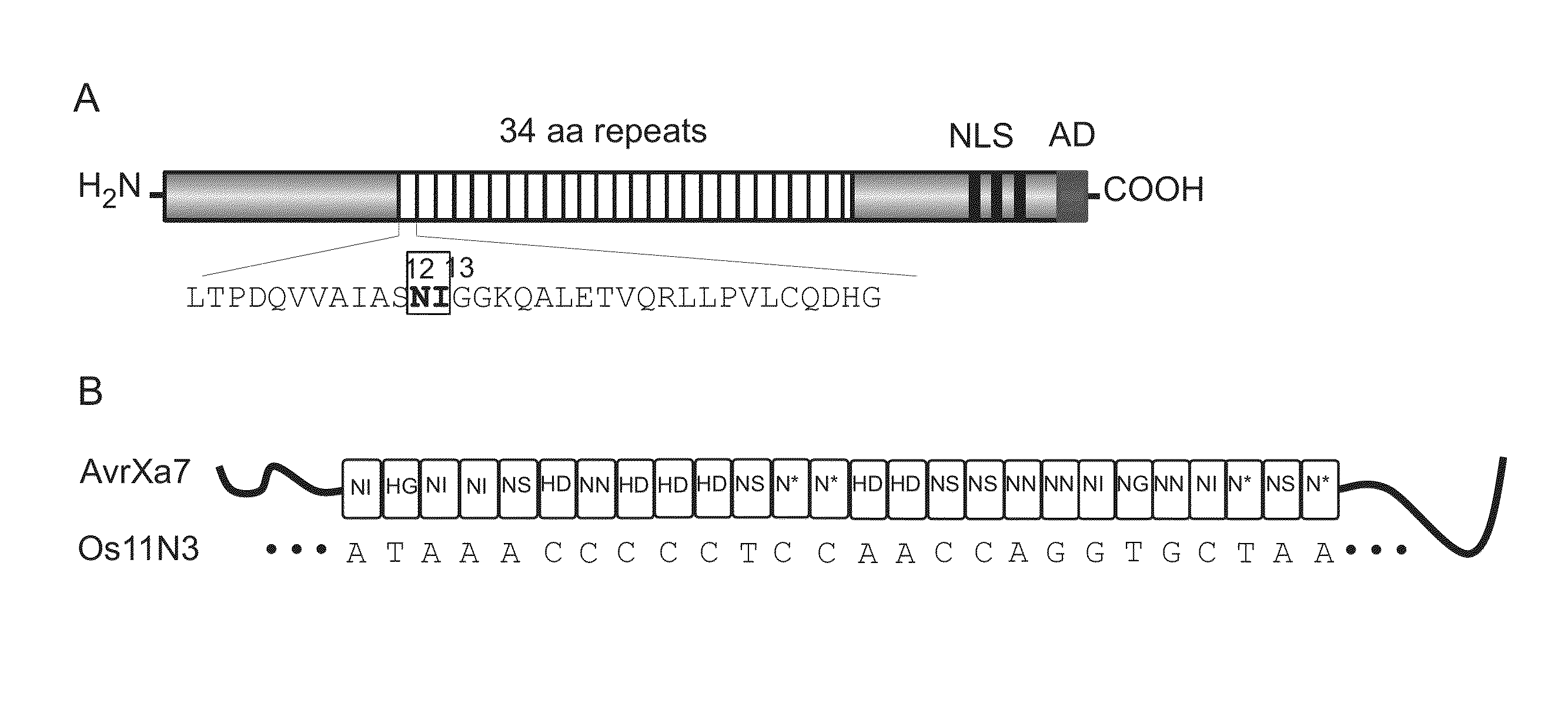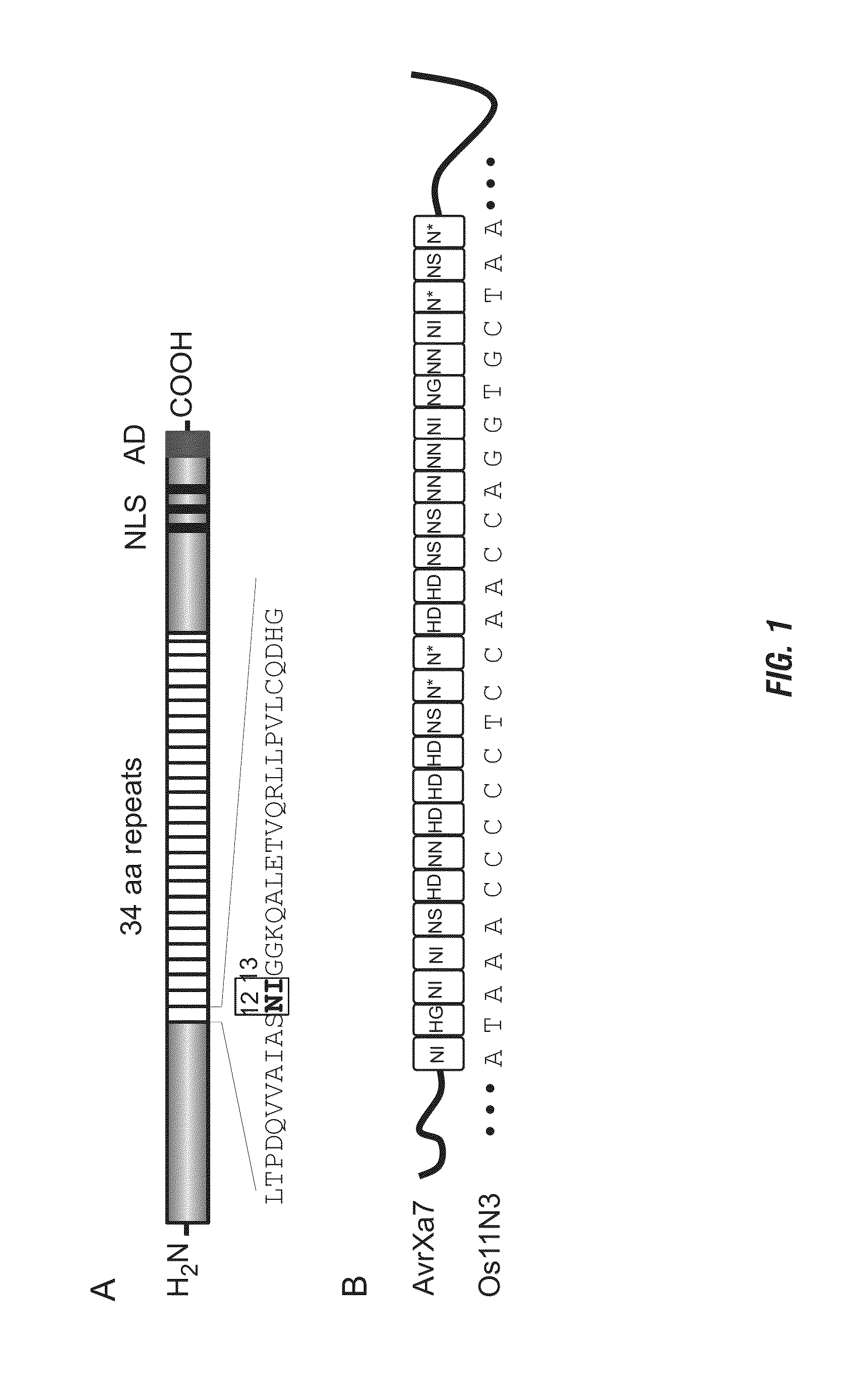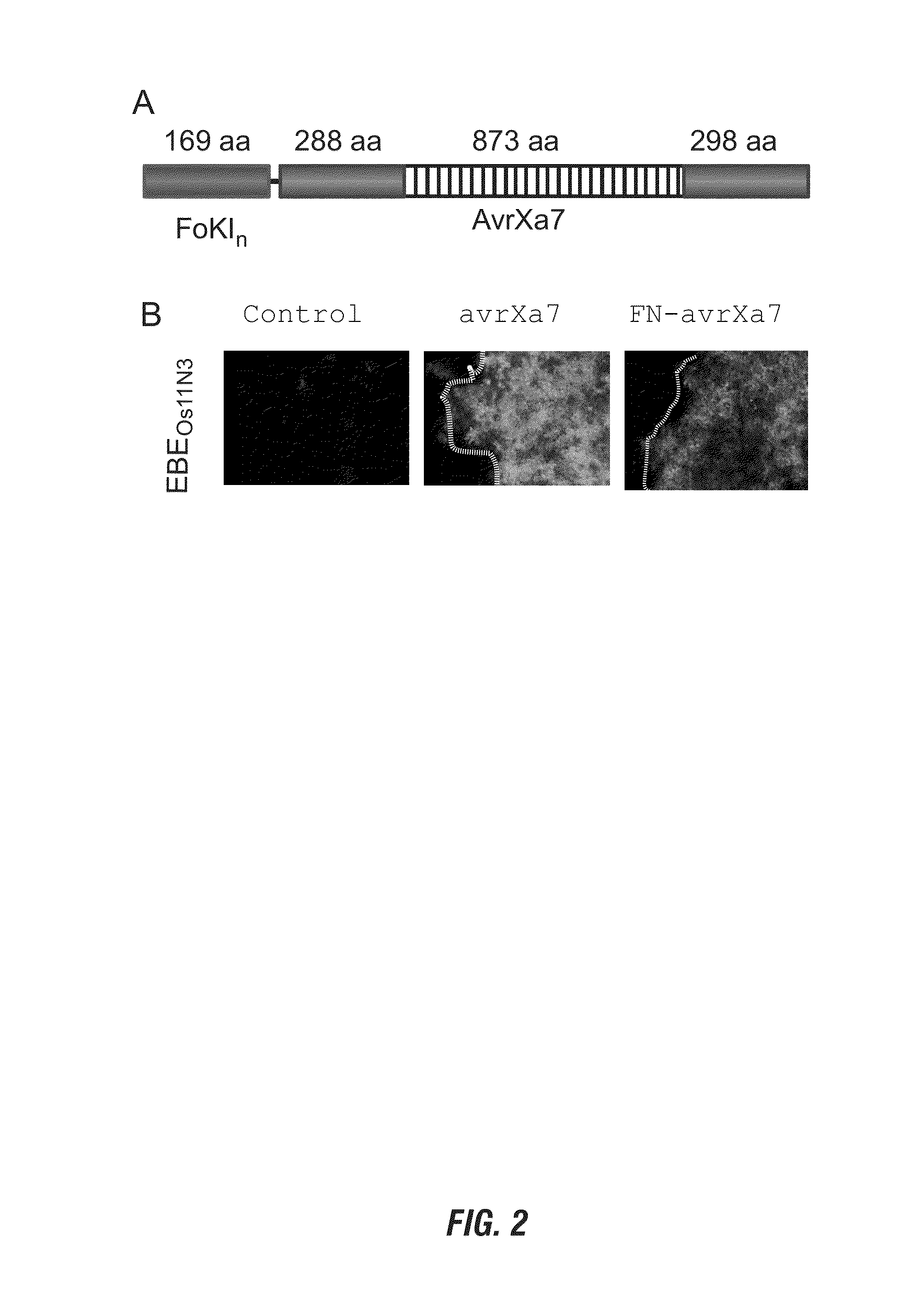Nuclease activity of tal effector and foki fusion protein
a technology of fusion protein and effector, which is applied in the field of methods, can solve the problems of high failure rate and wide adoption, and achieve the effect of promoting dna homologous recombination
- Summary
- Abstract
- Description
- Claims
- Application Information
AI Technical Summary
Benefits of technology
Problems solved by technology
Method used
Image
Examples
example 1
Chimeric Gene Construction
[0168]The chimeric gene for FN-AvrXa7 in a configuration of N-terminal FokI domain and C-terminal AvrXa7 was constructed using standard E. coli strains and DNA techniques (31). The full-length AvrXa7 was first modified with PCR primers Tal-F and Tal-R to integrate the restriction sites KpnI and BglII upstream of the start codon at 5′ end and HindIII, XbaI and a stop codon containing SpeI at 3′ end based on the plasmid pZWavrXa7 (29). AvrXa7 without repetitive central region was PCR amplified using primers Tal-F and Tal-R and cloned into pBluescript KS by KpnI and SpeI. Then the central repeat region was cloned back by SphI resulting in pSK / avrXa7. The DNA fragment encoding the cleavage domain (amino acids 388-583) of FokI (NCBI accession number J04623) was PCR amplified using the primers Fokn-F and Fokn-R and a plasmid containing FokI gene as template. Fokn-F contained the restriction sites KpnI and BglII, while Fokn-R contained a BamHI restriction sequence...
example 2
[0230]TALNs derived from the native TAL effectors target their EBEs in yeast chromosomal context. More recently, our results have demonstrated the feasibility of gene disruptions caused by TALNs when targeted to genes on yeast chromosome (vs. yeast plasmid DNA demonstrated previously) by constructing a URA3 gene containing PthXol / AvrXa7 EBE sites immediately downstream of the gene's ATG start codon and replacing the wild type URA3 gene on chromosome 5 with this modified, but fully functional, URA3 gene. Similarly, the dual target sequence for a pair of known ZFNs was also integrated into the URA3 gene for comparison (FIG. 1A). Yeast cells in which the URA3 gene was inactivated were selected on media containing 5-fluoroorotic acid (5-FOA), which is converted to a toxin in cells containing a functional URA3 gene. Results shown in FIGS. 10B & 10C demonstrated that expression of both types of nucleases in transformed yeast cells resulted in specific cleavage at the targeted sites and mu...
example 3
Targeted Gene Disruption in Mammalian Cells
[0234]Applicants designed a TALE endonuclease that targets the reporter gene Green Fluorescent Protein (egfp). This was accomplished by cloning eGFP dTALENs into a mammalian expression vector and transfecting human HEK293T cells with EGFP expression plasmid in the presence of increasing amounts of eGFP dTALENS. Next the GFP transfected cells were quantified by FACS. Then the GFP gene was amplified and sequenced from treated cells to characterize mutations / insertions at the target site.
[0235]FIG. 12 shows the target sites of the eGFP gene by TALNs.
[0236]For transfection of the human HEK293T cells with EGFP expression plasmid in the presence of increasing amounts of eGFP dTALEN, the HEK293-T cells were plated in 6-well plate. The cells were co-transfected with the DNAs at pEGFP-c2: 100 ng / well and TAL / GFP-L+TAL / GFP-R at 0, 0.5, lug / well (in duplicate). The cells were then incubated for 3 days, and examined with fluorescent microscope. FIG. 13...
PUM
| Property | Measurement | Unit |
|---|---|---|
| pH | aaaaa | aaaaa |
| fixed distance | aaaaa | aaaaa |
| affinity | aaaaa | aaaaa |
Abstract
Description
Claims
Application Information
 Login to View More
Login to View More - R&D
- Intellectual Property
- Life Sciences
- Materials
- Tech Scout
- Unparalleled Data Quality
- Higher Quality Content
- 60% Fewer Hallucinations
Browse by: Latest US Patents, China's latest patents, Technical Efficacy Thesaurus, Application Domain, Technology Topic, Popular Technical Reports.
© 2025 PatSnap. All rights reserved.Legal|Privacy policy|Modern Slavery Act Transparency Statement|Sitemap|About US| Contact US: help@patsnap.com



